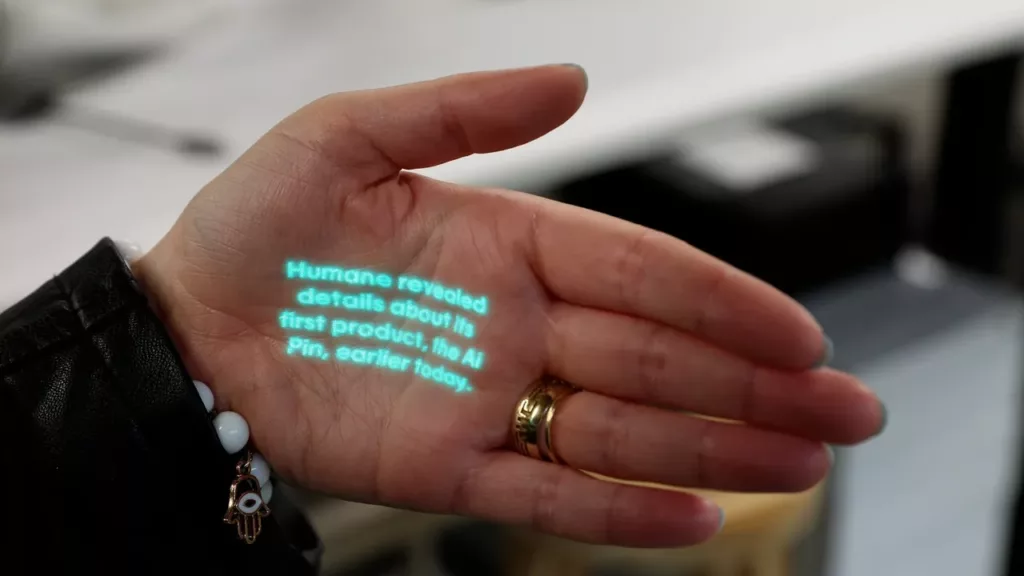Humane’s “Ai Pin” is a local generative AI that can project apps on your palm and receive voice commands. It has sensors, a camera, and speakers.
A company of ex-Apple designer Imran Chaudhri, called Humane, has developed a wearable projector that can be clipped to your clothes. Aimed at emulating and complementing a smartphone, it can help with apps, calls, and voice assistance by projecting directly on your hands or another surface. A generative AI is built locally into the pin with the help of Qualcomm and doesn’t need to be connected to the internet to work.
The product was unveiled at TED2023 in Canada. Everything from the design to functionality is developed from scratch. In the demo, Chaudhri showed how he received a call from his wife Bethany Bongiorno (co-founder) and the pin then projected the screen clearly on his palm. Then, when he says “I’m going to have to take this,” the AI triggers the phone’s pick-up function.

The screenless experience uses contextual interactions and sensing-based technology. It can flash apps on hard surfaces to emulate a smartphone screen anywhere. With a camera, sensors, and built-in speakers, the pin will release later this year in 2023.
The most useful application of the technology is to help with web searches and as a personal assistant, including throwing reminders for health issues. When Chaudhri holds up a chocolate bar and asks if he can eat it, the AI answers “A milky bar contains cocoa butter. Given your intolerance, you may want to avoid it.”
Dubbed “the disappearing computer,” it aims to become a personalized form of memory and accomplish so much more than what wrestling with smartphones can, for example, when you go to a new city and need some quick answers—as per the founder.
The pin is activated for input when you press the button on it, and then you can ask it anything. It’s trained on the company’s own AI model which is fairly competent as shown in the demo, at least in translating, understanding context, and answering queries.
As Chaudhri puts it, “What’s cool is my AI knows what’s best for me. But I’m in total control.” He puts the point across by telling the pin that he’s going to eat the chocolate bar anyway, to which the AI responds, “Enjoy it.”
AI through this mix of hardware and software is a “sense that will ever be evolving as technology improves too.”
It doesn’t need a paired phone to work. If you do not need to stream apps on your palm, it can work fine on its own.
Watch Humane’s Ai Pin:
June Wan from ZDNET writes, “How the wearable behaves in real-world scenarios like in between subway stations and areas with little to no cellular service remains untested.”
The team includes many ex-Apple employees.
The choice to use a lowercase “i” in AI isn’t clear. Possibly, the company aims to single-handedly change how we use the acronym, in hopes of making it a word (it won’t be the first case—Captcha, gif, Humvee, gulag, radar, sonar, or Zip in Zipcode are all acronyms).
- The company received a fresh round of investment worth $100M in March (TechCrunch). Microsoft is also an investor in Series C.
- So far, the company has been quite secretive about what it’s working on, demoing an early version of the device in an April TedTalk (Interesting Engineering).

